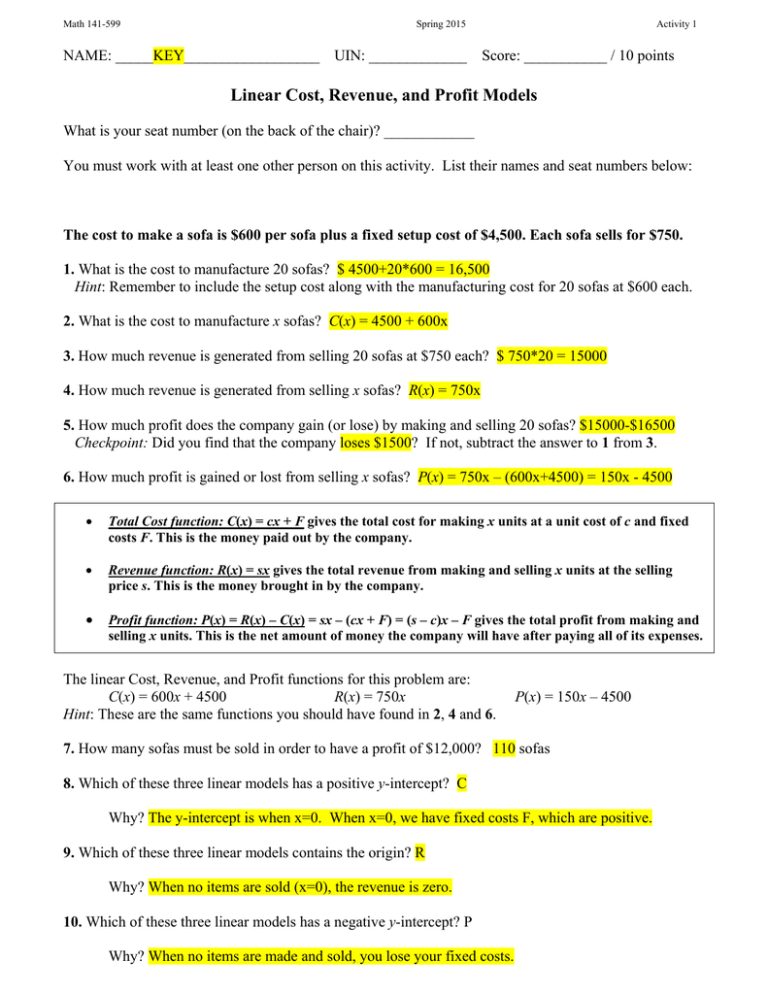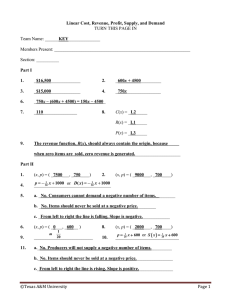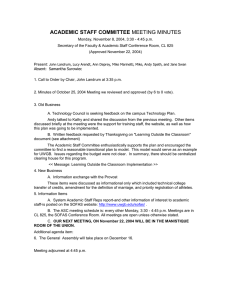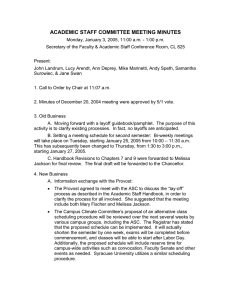Linear Cost, Revenue, and Profit Models
advertisement

Math 141-599 Spring 2015 Activity 1 NAME: _____KEY__________________ UIN: _____________ Score: ___________ / 10 points Linear Cost, Revenue, and Profit Models What is your seat number (on the back of the chair)? ____________ You must work with at least one other person on this activity. List their names and seat numbers below: The cost to make a sofa is $600 per sofa plus a fixed setup cost of $4,500. Each sofa sells for $750. 1. What is the cost to manufacture 20 sofas? $ 4500+20*600 = 16,500 Hint: Remember to include the setup cost along with the manufacturing cost for 20 sofas at $600 each. 2. What is the cost to manufacture x sofas? C(x) = 4500 + 600x 3. How much revenue is generated from selling 20 sofas at $750 each? $ 750*20 = 15000 4. How much revenue is generated from selling x sofas? R(x) = 750x 5. How much profit does the company gain (or lose) by making and selling 20 sofas? $15000-$16500 Checkpoint: Did you find that the company loses $1500? If not, subtract the answer to 1 from 3. 6. How much profit is gained or lost from selling x sofas? P(x) = 750x – (600x+4500) = 150x - 4500 Total Cost function: C(x) = cx + F gives the total cost for making x units at a unit cost of c and fixed costs F. This is the money paid out by the company. Revenue function: R(x) = sx gives the total revenue from making and selling x units at the selling price s. This is the money brought in by the company. Profit function: P(x) = R(x) – C(x) = sx – (cx + F) = (s – c)x – F gives the total profit from making and selling x units. This is the net amount of money the company will have after paying all of its expenses. The linear Cost, Revenue, and Profit functions for this problem are: C(x) = 600x + 4500 R(x) = 750x Hint: These are the same functions you should have found in 2, 4 and 6. P(x) = 150x – 4500 7. How many sofas must be sold in order to have a profit of $12,000? 110 sofas 8. Which of these three linear models has a positive y-intercept? C Why? The y-intercept is when x=0. When x=0, we have fixed costs F, which are positive. 9. Which of these three linear models contains the origin? R Why? When no items are sold (x=0), the revenue is zero. 10. Which of these three linear models has a negative y-intercept? P Why? When no items are made and sold, you lose your fixed costs.


